Pepsi Challenge
description: a marketing campaign by PepsiCo where participants do a blind taste test comparing Pepsi and Coca-Cola
27 results

Blink: The Power of Thinking Without Thinking
by
Malcolm Gladwell
Published 1 Jan 2005
By the early 1980s, Coke had dropped to 12 percent and Pepsi had risen to 11 percent—and this despite the fact that Coke was much more widely available than Pepsi and spending at least $100 million more on advertising per year. In the midst of this upheaval, Pepsi began running television commercials around the country, pitting Coke head-to-head with Pepsi in what they called the Pepsi Challenge. Dedicated Coke drinkers were asked to take a sip from two glasses, one marked Q and one marked M. Which did they prefer? Invariably, they would say M, and, lo and behold, M would be revealed as Pepsi. Coke’s initial reaction to the Pepsi Challenge was to dispute its findings. But when they privately conducted blind head-to-head taste tests of their own, they found the same thing: when asked to choose between Coke and Pepsi, the majority of tasters—57 percent—preferred Pepsi.
…
The head of Coke’s consumer marketing research department in those years was a man named Roy Stout, and Stout became one of the leading advocates in the company for taking the results of the Pepsi Challenge seriously. “If we have twice as many vending machines, have more shelf space, spend more on advertising, and are competitively priced, why are we losing [market] share?” he asked Coke’s top management. “You look at the Pepsi Challenge, and you have to begin asking about taste.” This was the genesis of what came to be known as New Coke. Coke’s scientists went back and tinkered with the fabled secret formula to make it a little lighter and sweeter—more like Pepsi.
…
For the last twenty years, Coke has gone head-to-head with Pepsi with a product that taste tests say is inferior, and Coke is still the number one soft drink in the world. The story of New Coke, in other words, is a really good illustration of how complicated it is to find out what people really think. 3. The Blind Leading the Blind The difficulty with interpreting the Pepsi Challenge findings begins with the fact that they were based on what the industry calls a sip test or a CLT (central location test). Tasters don’t drink the entire can. They take a sip from a cup of each of the brands being tested and then make their choice. Now suppose I were to ask you to test a soft drink a little differently.
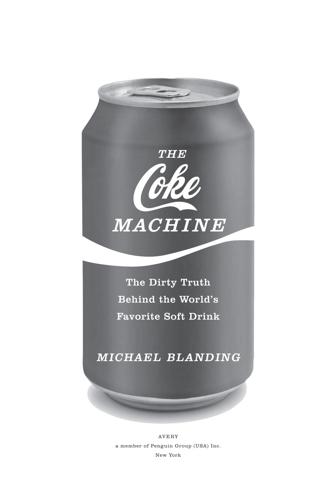
The Coke Machine: The Dirty Truth Behind the World's Favorite Soft Drink
by
Michael Blanding
Published 14 Jun 2010
As Pepsi’s new CEO Roger Enrico once said, “At Pepsi, we like the Cola Wars. . . . The more fun we provide, the more people buy our products—all our products.” It was Pepsi, however, that changed the rules of engagement, leading to the Coca-Cola Company’s biggest blunder, and the Coca-Cola brand’s greatest triumph. W hat’s amazing , in retrospect, about the Pepsi Challenge isn’t that Pepsi had the audacity to compete with Coke on the basis of taste. It’s that it hadn’t done so before. Here, the two soda giants had been fighting it out for decades on which soda refreshed or relaxed you better, on which one made you feel younger or more nostalgic—as if to distract consumers from the simple idea that they could just drink the one they thought tasted better.
…
Nonetheless, both companies fired off competing ads, each claiming they actually tasted better, at the same time slashing prices and offering dis counts at supermarkets to win back customers. After a year or two, how ever, they realized the scorched-earth tactics only hurt both of them. “The Pepsi Challenge, if managed differently, might have resulted in a real Cola War, one that was price-based,” says historian Richard Tedlow. “This, however, is precisely the kind of competition both companies want to avoid.” Pepsi’s incoming president, Roger Enrico, called off the cam paign almost as soon as it began, and both companies soon returned to more traditional forms of advertising—with Coca-Cola releasing the new 60 THE COKE MACHINE slogan, “Coke Is It!”
…
The day before, Pepsi had taken out a full-page ad in The New York Times declaring victory in the Cola Wars with the statement “The Other Guy Just Blinked.” As Goizueta followed a montage of cowboys, the Grand Canyon, and the Statue of Liberty onto the stage, the press corps leaped: “To what ex tent are you introducing this product to meet the Pepsi Challenge?” “Have you simply added more sweetness to make it more competitive with Pepsi?” In the face of such direct questions, Goizueta temporized. New Coke wasn’t any sweeter than old Coke, he said, rather it had a “rounder . . . bolder . . . more harmonious flavor.” Pepsi had nothing to do with it.
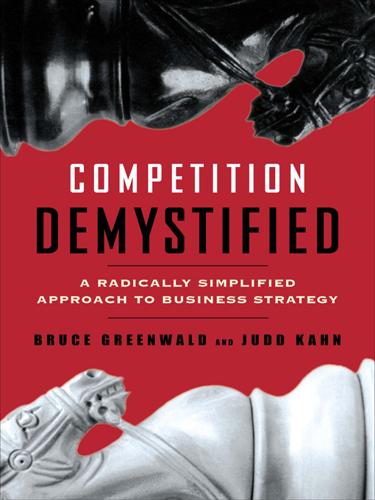
Competition Demystified
by
Bruce C. Greenwald
Published 31 Aug 2016
Customers of companies in a cooperating industry should seek private, nontransparent price arrangements; deal with suppliers individually, offering to concentrate their business with those who defect on price or features; and cooperate with other large customers in trying to undermine industry cooperation. A knowledge of the dynamics of the prisoner’s dilemma can cut both ways. CHAPTER 9 Uncivil Cola Wars Coke and Pepsi Confront the Prisoner’s Dilemma THE PEPSI CHALLENGE In 1974, Pepsi stood third, behind both Coca-Cola and Dr Pepper, for soda sales in Dallas, Texas. A Pepsi sales manager decided to confront Coca-Cola directly. He began offering supermarket customers a taste test, to see whether they preferred Pepsi to Coke, provided they did not know which they were drinking.
…
We have divided markets into two competitive regimes: those with barriers to entry and those without. In which one do Coca-Cola and Pepsi operate? Both key indicators of the presence of barriers to entry and competitive advantage—stable market shares and a high return on capital—are present here. By the time of the Pepsi Challenge, in the late 1970s, the market shares of the major players within the domestic soft drink industry had become quite stable. At the top were the two giants, Coke and Pepsi, sharing over 60 percent of the market between them. The rest of the revenue went to three other popular drinks and a host of private label, local, or other decidedly third-tier players.
…
Executives in both companies were rewarded for sales growth and market share gains, even if they had to sacrifice profit to get there. A warrior culture permeated the two firms, setting the standards for attitude and behavior. These qualities are not conducive to a successful marriage. This was the environment in which Coca-Cola embarked on its long-belated response to the Pepsi Challenge. TABLE 9.3 Coke’s and Pepsi’s Competitive Steps, 1933–1982 TABLE 9.3 (continued) Coke’s and Pepsi’s Competitive Steps, 1933–1982 COCA-COLA’S FIRST MOVE: A SHOT IN THE FOOT Coca-Cola, watching its market share erode slowly and its operating margins shrink, decided to make a frontal assault on Pepsi.
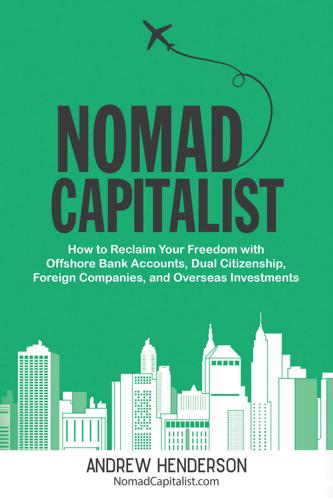
Nomad Capitalist: How to Reclaim Your Freedom With Offshore Bank Accounts, Dual Citizenship, Foreign Companies, and Overseas Investments
by
Andrew Henderson
Published 8 Apr 2018
John Sculley, the CEO of Pepsi at the time, decided to change all that with what became known as the iconic Pepsi Challenge. Pepsi knew that their cola performed well in blind taste tests, but as soon as the brand was part of the equation, Coke always won. So, Pepsi created an advertising campaign built around a blind taste test with regular folks off the street. Their goal was to capture the expression of loyal Coke fans on camera when – after taste testing the colas in Cup A and Cup B – they would discover that the cola they had chosen was actually Pepsi. The advertisement that made Coca Cola go nuts was of a granddaughter who persuaded her grandmother to try the Pepsi Challenge while they were out shopping together.
…
However, there are plenty of other places that will allow you to open an account that are actually better than the cash-poor banks of western countries. All you have to do to gain access to these banks and the many services that they offer is to surmount the borders you have created in your mind about where you can go and which places best serve your needs. The Pepsi Challenge Construction on these psychological borders begins from a young age as we are taught to believe that our country is ‘the best’ from the time we are little. Americans in particular are of the belief that their country is ‘the best country on earth.’ Heck, even political types who believe the United States is descending into fascism will tell you, “But it’s still the best country in the world.”
…
But she went ahead and tried the two colas and selected her favorite. When they revealed the brands, the granddaughter said in disbelief, “Grandma, you picked Pepsi!” The grandmother replied, “I know! I’ve never had a Pepsi in my life. It must be better!” I am not going to weigh in on the Pepsi vs. Coke battle, but there is a lot we can learn from the Pepsi Challenge about the power of conditioning and what it takes to go where you’re treated best. There are very few companies that do branding better than Coca Cola. At its core, branding is nothing more than conditioning. Coke works hard to condition consumers to relate the feelings of happiness and joy associated with the Christmas season (or the Olympics, summer BBQs, etc.) to a bottle of Coke.
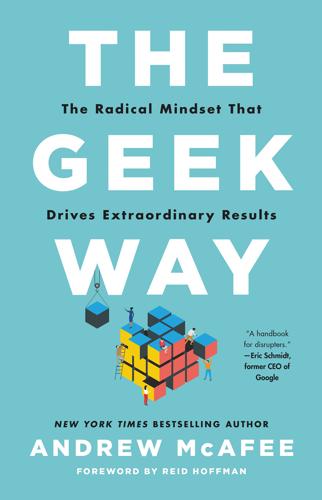
The Geek Way: The Radical Mindset That Drives Extraordinary Results
by
Andrew McAfee
Published 14 Nov 2023
In 1985 Coke was still the clear leader in carbonated beverages, but it had been steadily losing market share to Pepsi. One reason the gap was shrinking was a successful ad campaign based around a type of A/B test. This was the “Pepsi challenge,” a blind side-by-side taste test in which a majority of people preferred the sweeter, less sharp taste of Pepsi over Coke after taking a sip of each. Coke’s internal tests showed the same thing as the Pepsi challenge, which convinced Goizueta of the need for change. He enlisted a few executives in a plan to strike back at Pepsi. They came up with a sweeter cola formulation that beat the existing recipe in secretly conducted taste tests, 55 percent to 45 percent.
…
The Coca-Cola Company got into deep trouble with New Coke because it only followed the evidence-gathering part of this norm. The Pepsi challenge was a kind of A/B test, and evidence from the tests indicated that people preferred the taste of Pepsi over (old) Coke. Coca-Cola even replicated this test internally, and got the same empirical results. The mistake they made was not arguing enough about them. More argumentation would have revealed that there was a small problem with using the results of the Pepsi challenge to justify New Coke, and also a gargantuan problem. The small one was mistaking a sip of cola for a glass or bottle full of it.
…
The small one was mistaking a sip of cola for a glass or bottle full of it. Many cola drinkers preferred the sweeter taste of Pepsi when they were only having a sip (as was the case in the Pepsi challenge), but when drinking more their preference changed. The gargantuan problem was thinking that people drank Coke because of how it tasted. Instead, they mainly drank it because of what it meant. For nearly a century before New Coke came along Coca-Cola had been an unvarying part of the American experience. Its place in the country’s psyche was already established by 1938 when William Allen White, a Kansas newspaper editor, described it as “a sublimated essence of all that America stands for, a decent thing honestly made.”

Buyology
by
Martin Lindstrom
Published 14 Jul 2008
IN 1975, WATERGATE was still scandalizing America. Margaret Thatcher was elected the leader of the conservative party in Great Britain. Color TV debuted in Australia. Bruce Springsteen came out with Born to Run. And executives at the Pepsi-Cola Company decided to roll out a heavily publicized experiment known as the Pepsi Challenge. It was very simple. Hundreds of Pepsi reps set up tables in malls and supermarkets all over the world, handing out two unmarked cups to every man, woman, and child who’d stopped to see what all the commotion was about. One cup contained Pepsi, the other Coke. The subjects were asked which one they preferred.
…
When the company’s marketing department finally toted up the results, Pepsi executives were pleased, if slightly perplexed. More than half of the volunteers claimed to prefer the taste of Pepsi over Coke. Hallelujah, right? So by all accounts, Pepsi should be trouncing Coke all across the world. But it wasn’t. It made no sense. In his 2005 best-seller, Blink, Malcolm Gladwell offers a partial interpretation. The Pepsi Challenge was a “Sip Test,” or what’s known in the soda industry as a “Central Location Test,” or CLT. He cites a former Pepsi new-product development executive, Carol Dollard, who explains the difference between taking a sip of a soft drink out of a cup and downing the entire can. In a sip test, people tend to like the sweeter product—in this case Pepsi—but when they drink an entire can of the stuff, there always lurks the possibility of blood sugar–overkill.
…
That, according to Gladwell, is why Pepsi prevailed in the taste test, but Coke continued to lead the market.10 But in 2003, Dr. Read Montague, the director of the Human Neuroimaging Lab at Baylor College of Medicine in Houston, decided to probe the test results more deeply. Twenty-eight years after the original Pepsi Challenge, he revised the study, this time using fMRI to measure the brains of his sixty-seven study subjects. First, he asked the volunteers whether they preferred Coke, Pepsi, or had no preference whatsoever. The results matched the findings of the original experiment almost exactly; more than half of the test subjects reported a marked preference for Pepsi.
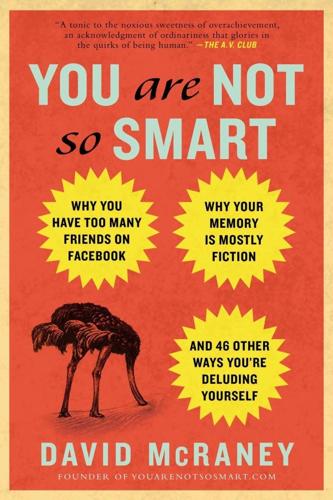
You Are Not So Smart
by
David McRaney
Published 20 Sep 2011
They called this “The Pepsi Challenge.” Psychologists had already determined you choose your favorite products often not by their inherent value, but because the marketing campaigns and logos and such have cast a spell over you called brand awareness. You start to identify yourself with one marketing campaign over another. That’s what happened in all the taste tests up until the Pepsi Challenge. People liked Coca-Cola’s advertising more than Pepsi’s, so even though they tasted pretty much the same, when they saw that bright red can with a white ribbon people chose Coke. So for the Pepsi Challenge, they removed the logos.
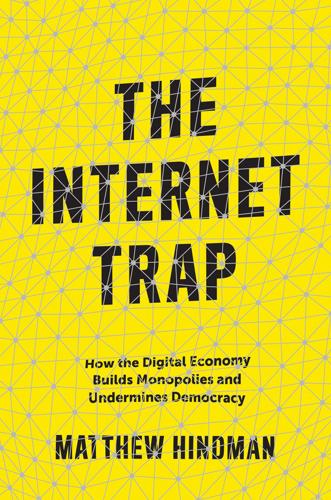
The Internet Trap: How the Digital Economy Builds Monopolies and Undermines Democracy
by
Matthew Hindman
Published 24 Sep 2018
One last look at the giant money pit that is Microsoft’s online operations. Business Insider. Retrieved from http://www.businessinsider.com /microsofts-online-operations-losses-2013-10. Zara, C. (2012, September). Bing vs Google: Microsoft’s Pepsi Challenge backfires. International Business Times. Retrieved from http://www.ibtimes.com/bing-vs -google-microsoft%C5%9B-pepsi-challenge-backfires-780715. Zelizer, B. (2009). Journalism and the academy. In K. Wahl-Jorgensen and T. Hanitzsch (eds.), The handbook of journalism studies (pp. 29–41). New York: Routledge. Zuboff, S. (2015). Big other: surveillance capitalism and the prospects of an information civilization.
…
Jansen, Zhang, and Schultz showed that users strongly preferred Google-branded results over the same results attributed to other search engines.61 Pan and collaborators used eye-tracking technology to show that users focused on just the top few search results.62 This remained true even when the researchers reversed the real Google rankings, placing the last results first, something they attributed to users’ built-up trust in the Google brand. Microsoft has actually based a major advertising effort on this sort of A/B testing. Microsoft’s “Bing It On” ad campaign, like the long-running Pepsi Challenge, asks users to compare unbranded results from both Bing and Google side by side. Microsoft claims that most users prefer Bing to Google, based on a self-funded study.63 Outside research has not supported Microsoft’s claims. Using blinded experiments, Ataullah and 32 • Chapter 2 Lank64 and Ayres et al.65 found that users deprived of brand labels still had a slight preference for the Google results.
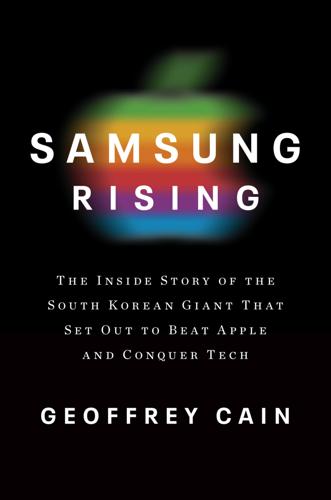
Samsung Rising: The Inside Story of the South Korean Giant That Set Out to Beat Apple and Conquer Tech
by
Geoffrey Cain
Published 15 Mar 2020
Pepsi confronted the industry leader head-to-head with its “Pepsi Challenge” campaign in the 1970s. In a series of commercials shot at shopping malls and parks, random people were given blind taste tests sipping cups of Coke and Pepsi, the labels hidden. The majority opted for Pepsi, the sweeter drink. It was a legendary but controversial stroke of marketing, breaking the adage that you avoided attacking a competitor head-on. What if more people chose Coke? Coke, in response, became convinced, as a result of the Pepsi challenge, that Americans preferred a sweeter drink. So it changed its sacrosanct recipe for the first time in its history, creating a new and sweeter Coca-Cola called “New Coke.”
…
Step two was to ensure that the economics of the coming marketing war on Apple made sense. Samsung had built, under Pete Skarzynski, a carrier-driven model, jumping through hoops to ensure that Sprint and AT&T received their own customized Galaxy phones to sell, using Samsung’s marketing money. If Todd pulled a maneuver akin to the Pepsi challenge too soon, swarms of customers might show up at AT&T stores—AT&T was the exclusive carrier for the iPhone at the time—only to have the advertising throughout the stores nudge them toward Apple. The solution? To redirect Samsung’s marketing budget. At the time, Samsung was putting about 70 percent of its U.S. smartphone budget in so-called marketing development funds (MDFs), which were cash piles allocated to the carriers for advertising and rebates.
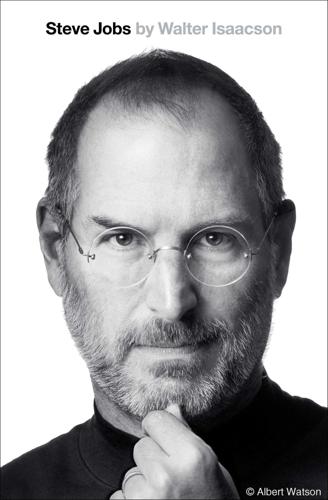
Steve Jobs
by
Walter Isaacson
Published 23 Oct 2011
CHAPTER EIGHT Xerox and Lisa: Graphical User Interfaces CHAPTER NINE Going Public: A Man of Wealth and Fame CHAPTER TEN The Mac Is Born: You Say You Want a Revolution CHAPTER ELEVEN The Reality Distortion Field: Playing by His Own Set of Rules CHAPTER TWELVE The Design: Real Artists Simplify CHAPTER THIRTEEN Building the Mac: The Journey Is the Reward CHAPTER FOURTEEN Enter Sculley: The Pepsi Challenge CHAPTER FIFTEEN The Launch: A Dent in the Universe CHAPTER SIXTEEN Gates and Jobs: When Orbits Intersect CHAPTER SEVENTEEN Icarus: What Goes Up . . . CHAPTER EIGHTEEN NeXT: Prometheus Unbound CHAPTER NINETEEN Pixar: Technology Meets Art CHAPTER TWENTY A Regular Guy: Love Is Just a Four-Letter Word CHAPTER TWENTY-ONE Family Man: At Home with the Jobs Clan CHAPTER TWENTY-TWO Toy Story: Buzz and Woody to the Rescue CHAPTER TWENTY-THREE The Second Coming: What Rough Beast, Its Hour Come Round at Last . . .
…
As soon as he realized what Belleville and the other engineers had done behind his back, said Hertzfeld, “Steve swallowed his pride and thanked them for disobeying him and doing the right thing.” It was, after all, what he would have done in their situation. CHAPTER FOURTEEN ENTER SCULLEY The Pepsi Challenge With John Sculley, 1984 The Courtship Mike Markkula had never wanted to be Apple’s president. He liked designing his new houses, flying his private plane, and living high off his stock options; he did not relish adjudicating conflict or curating high-maintenance egos. He had stepped into the role reluctantly, after he felt compelled to ease out Mike Scott, and he promised his wife the gig would be temporary.
…
They decided not to focus on technology executives; what they needed was a consumer marketer who knew advertising and had the corporate polish that would play well on Wall Street. Roche set his sights on the hottest consumer marketing wizard of the moment, John Sculley, president of the Pepsi-Cola division of PepsiCo, whose Pepsi Challenge campaign had been an advertising and publicity triumph. When Jobs gave a talk to Stanford business students, he heard good things about Sculley, who had spoken to the class earlier. So he told Roche he would be happy to meet him. Sculley’s background was very different from Jobs’s. His mother was an Upper East Side Manhattan matron who wore white gloves when she went out, and his father was a proper Wall Street lawyer.
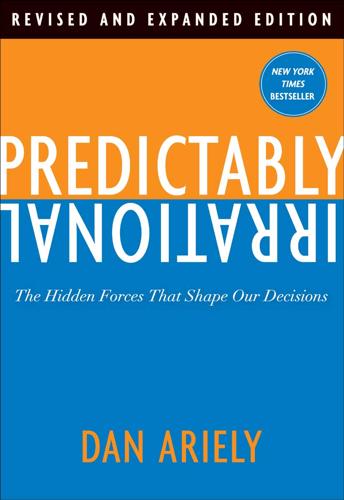
Predictably Irrational, Revised and Expanded Edition: The Hidden Forces That Shape Our Decisions
by
Dan Ariely
Published 19 Feb 2007
This is also essential for building the reputation of a brand or product. That’s what marketing is all about—providing information that will heighten someone’s anticipated and real pleasure. But do expectations created by marketing really change our enjoyment? I’m sure you remember the famous “Pepsi Challenge” ads on television (or at least you may have heard of them). The ads consisted of people chosen at random, tasting Coke and Pepsi and remarking about which they liked better. These ads, created by Pepsi, announced that people preferred Pepsi to Coke. At the same time, the ads for Coke proclaimed that people preferred Coke to Pepsi.
…
As the participants received a drink, they were also presented with visual information indicating either that Coke was coming, that Pepsi was coming, or that an unknown drink was coming. This way the researchers could observe the brain activation of the participants while they consumed Coke and Pepsi, both when they knew which beverage they were drinking and when they did not. What were the results? In line with the Coke and Pepsi “challenges,” it turned out that the brain activation of the participants was different depending on whether the name of the drink was revealed or not. This is what happened: Whenever a person received a squirt of Coke or Pepsi, the center of the brain associated with strong feelings of emotional connection—called the ventromedial prefrontal cortex, VMPFC—was stimulated.

The Great Mental Models: General Thinking Concepts
by
Shane Parrish
Published 22 Nov 2019
With the statistics available to us, the probabilities of these things are easy to price and predict across a large enough population. But insurance is deeply wide-ranging, and insurers will insure almost any event, for a price. Insurance policies have been taken out on Victoria’s Secret models’ legs, on baseball players’ arms, on the Pepsi Challenge and the NCAA tournament, and even on a famous country singer’s breasts! How is this possible? Only with a close attention to probability. What the great insurance companies in the world know how to do is pay attention to the important factors, even if they’re not totally predictable, and price accordingly.
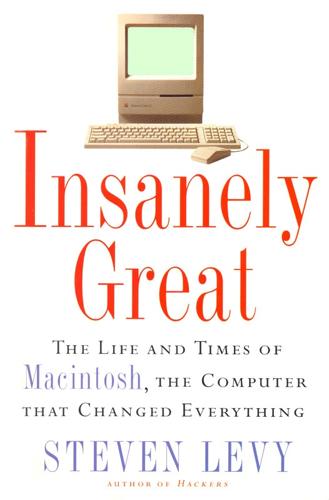
Insanely Great: The Life and Times of Macintosh, the Computer That Changed Everything
by
Steven Levy
Published 2 Feb 1994
But instead of designing buildings, he pursued an M.B.A. at Wharton. After a brief tour at the McCann-Erickson advertising agency, he went to work for PepsiCo-he had married the chairman's daughter-and determinedly made his mark on the company, working on the Pepsi Generation campaign, reorganizing the snack foods division, masterminding the Pepsi Challenge. Later, he would speak about these tasks as if they were Great Works, but he must have known better. When Steve Jobs taunted him "Do you want to sell sugared water for the rest of your life?" it marked the turning point for Sculley. Sculley's move to Silicon Valley in 1983-a journey the particulars of which he later accounted with Homeric gravity-was the opportunity to make his own dent in the universe.
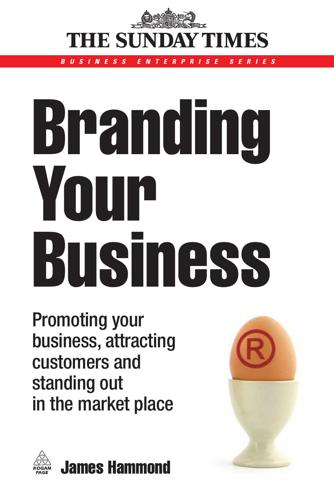
Branding Your Business: Promoting Your Business, Attracting Customers and Standing Out in the Market Place
by
James Hammond
Published 30 Apr 2008
Be distinct or extinct. (Tom Peters, In Search of Excellence) Brands represent much more than a factual, rational connection to the product or service. They go beyond the boundaries of reason and extend into emotion. In 2003, researchers conducted a laboratory experiment based on the famous ‘Pepsi Challenge’, a long-running blind taste test where respondents were shown to prefer the taste of Pepsi to that of its rival, Coke. When asked to taste both Coca-Cola and Pepsi without the tasters knowing which brand was which, preference for the Pepsi taste scored higher than that for Coke. Yet when the tasters were told beforehand which one was Coca-Cola and which one was Pepsi, guess what happened?
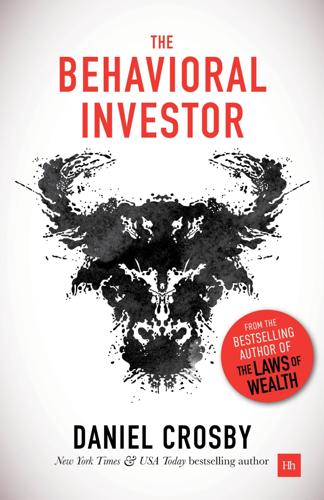
The Behavioral Investor
by
Daniel Crosby
Published 15 Feb 2018
By employing lifestyle advertising before there was a name for such a thing, Coke has woven itself into the fabric of American life in a way that is unprecedented. It is hard to imagine a brand that feels like more of a known quantity than Coca-Cola. As a result, Coke was relatively unimpacted by the Pepsi challenge, despite their relatively poor showing. Pepsi banked on soda drinkers making a change based on updating rational preferences, but Coke won by realizing that nothing tastes quite as good as familiarity.41 What’s the big idea? Thinking is metabolically taxing – we have to parse tens of thousands of decisions per day.

Start With Why: How Great Leaders Inspire Everyone to Take Action
by
Simon Sinek
Published 29 Oct 2009
Originally hired by Jobs in 1983, Sculley was a perfectly capable executive with a proven track record. He know WHAT to do and HOW to do things. He was considered one of the most talented marketing executives around, having risen quickly through the ranks of PepsiCo. At Pepsi, he created the wildly successful Pepsi Challenge taste test advertising campaign, leading Pepsi to overtake Coca-Cola for the first time. But the problem was, Sculley was a bad fit at Apple. He ran the company as a business and was not there to lead the cause. It is worth considering how such a bad fit as Sculley even got the job at Apple in the first place.
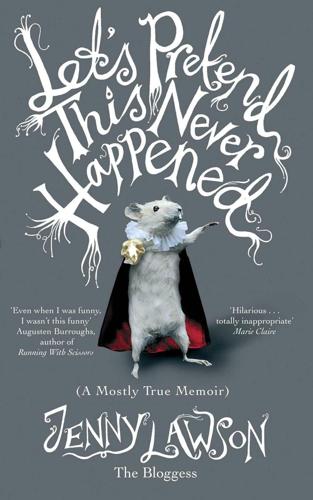
Let's Pretend This Never Happened (A Mostly True Memoir)
by
Jenny Lawson
Published 5 Mar 2013
Except I didn’t eat it, because after that the smell of blood made me gag, and to this day I can’t eat any meat that I’ve seen or smelled raw, which my husband complains about all the time, but until he’s worn a deer sweater he can just shut the hell up. He says it’s all in my mind, but it’s totally not, and I’ve even offered to take some sort of blind smell test, like they did in the Pepsi challenge, where he holds bowls of blood up to my nose so that I can prove that I can smell blood, but he won’t do it. Probably because he’s kind of anal about our bowls. He wouldn’t even let me use one for throwing up in when I was sick. He was all, “Vomit bowl? Who uses a vomit bowl?!” and I was all, “I use a vomit bowl.
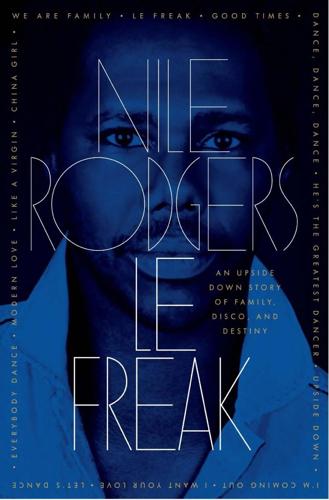
Le Freak: An Upside Down Story of Family, Disco, and Destiny
by
Nile Rodgers
Published 17 Oct 2011
I remember one colleague’s reaction as clear as day—that of my friend Gail Boggs. Gail was a real pro; she’d sung with Bette Midler and costarred as one of Whoopi Goldberg’s spiritual assistants in the film Ghost. I can still recall the day she sat in my car to take my musical version of the Pepsi challenge. Unfortunately, it didn’t last very long. Once I blasted “Like a Virgin,” I never got a chance to follow up with “Material Girl.” After one listen she uttered these prophetic words: “Nile, this record is going to be No. 1 for at least six weeks.” It was. Gail was right! And I, well, I had to admit I was wrong.
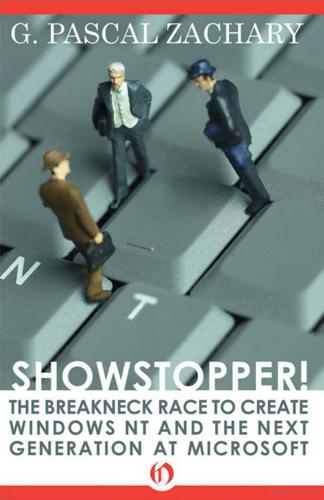
Showstopper!: The Breakneck Race to Create Windows NT and the Next Generation at Microsoft
by
G. Pascal Zachary
Published 1 Apr 2014
Still, it felt good to have a goal. By early January 1991, the project’s new structure and strategy were in place and many technical issues had been put to rest. Client-server was a done deal. Cutler’s people had demonstrated to Ballmer in a head-to-head comparison that Diamond had dubbed the “Pepsi Challenge” that Windows applications ran just the smallest percentage points slower on NT than they did on DOS. This was a “taste” test, of course; it would be many months before NT’s ability to emulate Windows was sufficiently advanced actually to run Windows applications fast. But the debate over client-server was over—and mercifully, Cutler felt.
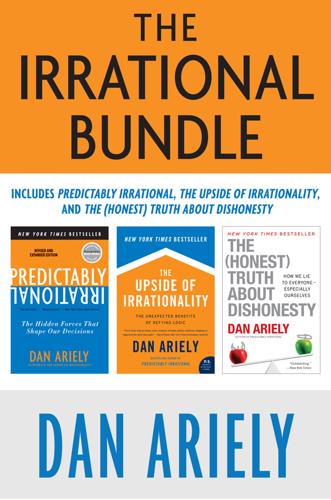
The Irrational Bundle
by
Dan Ariely
Published 3 Apr 2013
This is also essential for building the reputation of a brand or product. That’s what marketing is all about—providing information that will heighten someone’s anticipated and real pleasure. But do expectations created by marketing really change our enjoyment? I’m sure you remember the famous “Pepsi Challenge” ads on television (or at least you may have heard of them). The ads consisted of people chosen at random, tasting Coke and Pepsi and remarking about which they liked better. These ads, created by Pepsi, announced that people preferred Pepsi to Coke. At the same time, the ads for Coke proclaimed that people preferred Coke to Pepsi.
…
As the participants received a drink, they were also presented with visual information indicating either that Coke was coming, that Pepsi was coming, or that an unknown drink was coming. This way the researchers could observe the brain activation of the participants while they consumed Coke and Pepsi, both when they knew which beverage they were drinking and when they did not. What were the results? In line with the Coke and Pepsi “challenges,” it turned out that the brain activation of the participants was different depending on whether the name of the drink was revealed or not. This is what happened: Whenever a person received a squirt of Coke or Pepsi, the center of the brain associated with strong feelings of emotional connection—called the ventromedial prefrontal cortex, VMPFC—was stimulated.

The Everything Blueprint: The Microchip Design That Changed the World
by
James Ashton
Published 11 May 2023
The older device retained a strong following internally, causing a rift with those that believed the Mac was the future. Sculley and Jobs professed to have built a great friendship but their combination was ultimately a messy culture clash. Sculley, whose claim to fame was presiding over the creation of the Pepsi Challenge, a blind cola taste test that was the cornerstone of the brand’s advertising efforts, was polite and considerate and ceded too much power to Jobs, who inspired fierce loyalty despite some everyday rudeness. ‘He didn’t learn things very quickly,’ Jobs said of Sculley with his typical bluntness, who he decried for not embracing Apple’s products.
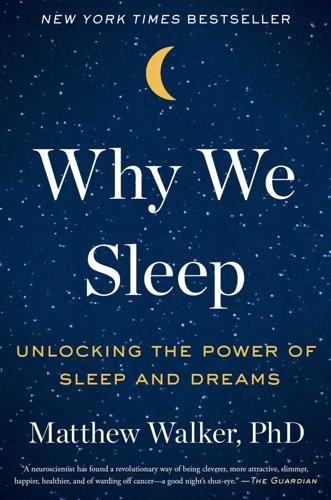
Why We Sleep: Unlocking the Power of Sleep and Dreams
by
Matthew Walker
Published 2 Oct 2017
Whatever the cause, things which could not be recalled on the spot are easily coordinated the next day, and time itself, which is generally accounted one of the causes of forgetfulness, actually serves to strengthen the memory.III It was not until 1924 when two German researchers, John Jenkins and Karl Dallenbach, pitted sleep and wake against each other to see which one won out for a memory-savings benefit—a memory researchers’ version of the classic Coke vs. Pepsi challenge. Their study participants first learned a list of verbal facts. Thereafter, the researchers tracked how quickly the participants forgot those memories over an eight-hour time interval, either spent awake or across a night of sleep. Time spent asleep helped cement the newly learned chunks of information, preventing them from fading away.
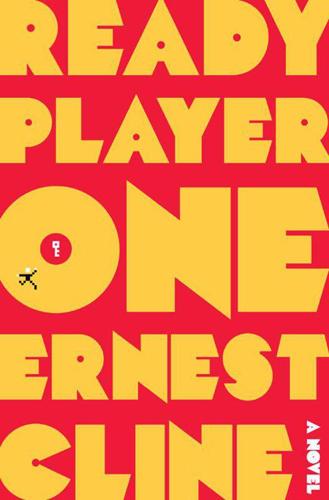
Ready Player One
by
Ernest Cline
Published 15 Feb 2011
I sat in my stronghold, staring at the Jade Key and reciting the words etched into its spine, over and over, like a maddening mantra: Continue your quest by taking the test Continue your quest by taking the test Continue your quest by taking the test Yes, but what test? What test was I supposed to take? The Kobayashi Maru? The Pepsi Challenge? Could the clue have been any more vague? I reached under my visor and rubbed my eyes in frustration. I decided I needed to take a break and get some sleep. I pulled up my avatar’s inventory and placed the Jade Key back inside. As I did, I noticed the silver foil wrapper in the inventory slot beside it—the wrapper that had covered the Jade Key when it first appeared in my hand.
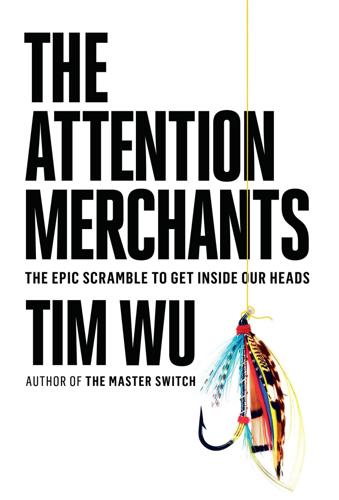
The Attention Merchants: The Epic Scramble to Get Inside Our Heads
by
Tim Wu
Published 14 May 2016
, Recorded Speech (1967, Millbrook, New York). 7. Timothy Leary, Start Your Own Religion (Berkeley, CA: Ronin Publishing, 2009), 128. 8. Thomas Frank, The Conquest of Cool: Business Culture, Counterculture, and the Rise of Hip Consumerism (Chicago: University of Chicago Press, 1997), 24. 9. As described in Stephanie Capparell, The Real Pepsi Challenge: How One Pioneering Company Broke Color Barriers in the 1940s (New York: Free Press, 2008). 10. Peter D. Bennett, Robert P. Lamm, and Robert A. Fry, Marketing, Volume 1 (New York: McGraw-Hill, 1988), 178. 11. Tristan Donovan, Fizz: How Soda Shook Up the World (Chicago: Chicago Review Press, 2013), 182. 12.
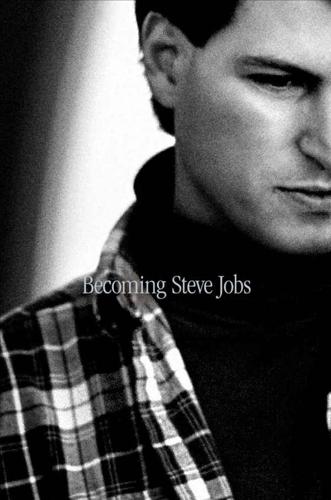
Becoming Steve Jobs: The Evolution of a Reckless Upstart Into a Visionary Leader
by
Brent Schlender
and
Rick Tetzeli
Published 24 Mar 2015
Sculley was a soda pop and snack food executive, a forty-three-year-old native New Yorker who was the product of the best prep school and Ivy League educations that money could buy, graduating from Brown and getting his MBA at Penn’s Wharton School. He made a name for himself at Pepsi designing taste-it-and-rate-it advertising campaigns like the “Pepsi Challenge,” and bringing new innovation to supermarket aisle “endcap” promotions and other cosmetic marketing ploys. He was a great champion of consumer research to determine how best to refine product offerings. Despite his dismissive penchant for ignoring Scotty and Markkula, Steve was fully aware that he still had much to learn about the world of business.
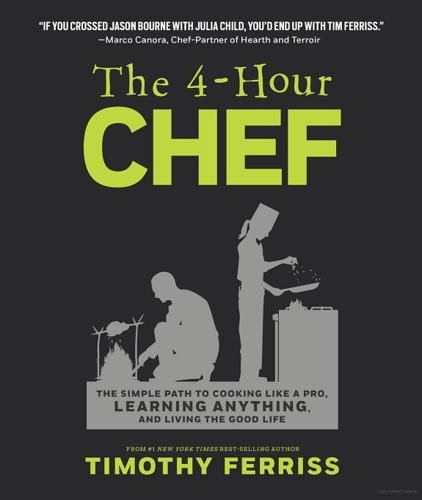
The 4-Hour Chef: The Simple Path to Cooking Like a Pro, Learning Anything, and Living the Good Life
by
Timothy Ferriss
Published 1 Jan 2012
The subsequent tutorial prompted Steve to reminisce about snatching pigeons by hand in NYC. “But aren’t you concerned about urban pigeons that eat garbage?” I asked. “I don’t think they eat garbage, actually. I’ve never seen a pigeon—and I pay attention to pigeons—eat dog shit.” “Don’t the city pigeons taste funny compared to rural pigeons?” “I wouldn’t want to do a Pepsi Challenge.” And this, dear reader, is when I went off the deep end. Curiosity piqued, I began to make phone calls to UC Berkeley, UC Davis, toxicologists, pest exterminators, and chemists. Given that nearly all cities have an endless supply of pigeons, I wanted to test things out firsthand. But I didn’t want to poison myself.

Console Wars: Sega, Nintendo, and the Battle That Defined a Generation
by
Blake J. Harris
Published 12 May 2014
Although the companies had been battling each other since the end of the nineteenth century (Coke was founded in 1886, Pepsi in 1898), Coke paid little attention to Pepsi, the perpetual follower, until 1975, when the underdog drastically amped up their marketing efforts and issued the now-famous “Pepsi Challenge.” Originally, the challenge entailed blind taste tastes at malls around America, but it eventually expanded to be more than just an amateur science experiment; it came to embody the revitalized spirit of the company. Pepsi wasn’t just challenging Coke, but challenging Americans to break the status quo and drink something different from their parents.